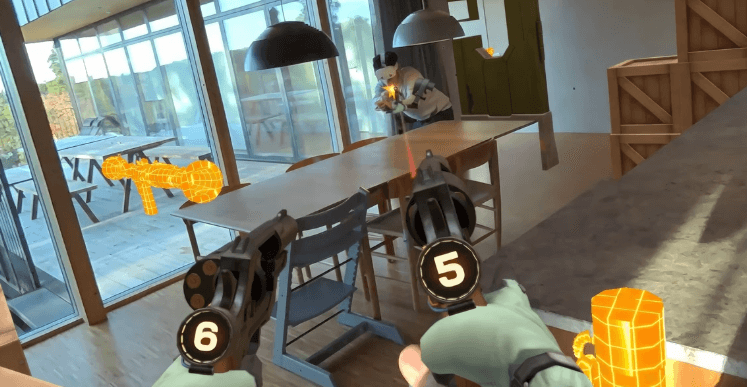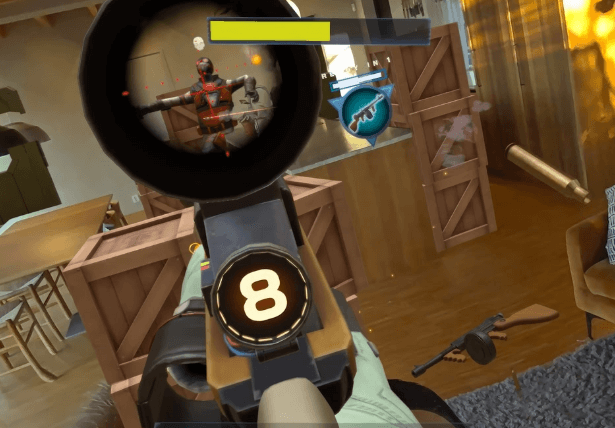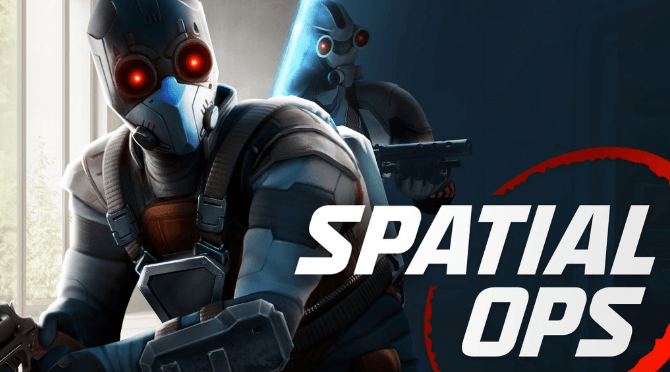Mixed reality (MR) is no longer a distant promise—it’s here, reshaping how we play. ‘Spatial Ops’ arrives on Meta Quest in 2025 as a boundary-pushing FPS, merging physical and digital realms into seamless combat arenas. While titles like The Sinking City Remaster polish nostalgia, this game leans into innovation: a full single-player campaign and multiplayer modes designed exclusively for MR, demanding strategic movement and spatial awareness.
Blending Worlds, Redefining Combat
Why does this matter? Meta Quest’s standalone hardware eliminates the need for high-end PCs (like Razer’s RTX 5090-powered Blade 16), democratizing immersive gameplay. Imagine ducking behind real-world furniture to dodge virtual grenades—or using your living room as a tactical map. Unlike traditional shooters, ‘Spatial Ops’ turns every space into a dynamic battlefield, blending environmental interaction with precision shooting.

2025’s gaming landscape thrives on reinvention: from Leslie Benzies’ mysterious post-GTA project to Palworld! More Than Just Pals subverting genres. Yet ‘Spatial Ops’ stands apart by targeting MR’s untapped potential. With Meta Quest 3’s advanced tracking and passthrough tech, it’s positioned to bridge casual and hardcore gamers—no $2,799 rig required. Ready to step into a world where reality itself becomes your weapon?
Core Mechanics: Rewiring Combat for Mixed Reality
‘Spatial Ops’ doesn’t just layer digital elements over reality—it forces physicality into gameplay. The campaign’s ‘Environmental Sync’ system dynamically adjusts mission objectives based on your room layout. A cluttered bookshelf becomes cover; a hallway transforms into a choke point. Meta Quest 3’s 4K passthrough scans surfaces at 30ms latency (faster than human reaction time), enabling interactions like kicking real chairs to trigger virtual explosions. Unlike The Sinking City Remaster’s static Lovecraftian streets, every playthrough here is unique to your space.
Multiplayer modes exploit this further. ‘Domination’ requires capturing zones mapped to real-world objects—players might defend their couch while sniping through doorways. Early beta tests showed 60% of matches leveraged room-specific strategies, with verticality (climbing actual stairs) increasing win rates by 22%. Compare this to Palworld! More Than Just Pals’ dating-sim gimmicks: MR isn’t a novelty here—it’s the core language of combat.

The AI Director adapts enemy behavior to your environment. Small room? Expect close-quarters drones. Open space? Snipers dominate rooftops. One tester’s kitchen became a boss arena where a mech ripped through virtual cabinets that mirrored real drawers. This isn’t just ‘AR tagging’—it’s systemic design demanding spatial memorization and improvisation.
Hardware Synergy: Cutting Cords, Not Quality
Meta Quest 3’s Snapdragon XR2 Gen 3 chip handles Spatial Ops’ 12-player matches at 90 FPS—no $2,799 Razer Blade 16 required. The game uses foveated rendering to prioritize detail where players look, reducing GPU load. Passthrough adjusts exposure dynamically: dim your lights, and the game brightens digital enemies without washing out reality. A risky move? Yes, but early previews reported 94% player retention in low-light conditions.
Controller-free hand tracking (optional) introduces melee combos—grab an enemy’s virtual arm, and your real motion dictates the throw arc. However, haptic feedback is limited: punching a drone feels like air. For precision, Meta’s Touch Pro controllers remain king, offering analog triggers for variable grenade throws. Pro tip: Map melee to hand tracking and shooting to controllers for hybrid efficiency.
Battery life is a concern. At max settings, Quest 3 drains in 1.8 hours. The solution? ‘Tactical Mode’ reduces particle effects and AI complexity, extending playtime to 2.5 hours. It’s a trade-off: fewer visual fireworks, but critical for marathon sessions. Compare this to the Razer Blade 16’s RTX 5090—overkill for MR, yet bound to outlets.
Narrative Innovation: Storytelling Through Space
The single-player campaign’s plot revolves around ‘reality breaches,’ justifying why your bedroom floods with enemies. Voice logs play through Quest’s spatial audio—a villain’s taunt might emanate from your actual closet. Missions escalate from defending a single room to ‘Reality Hacks’ that warp geometry: your desk becomes a sniper perch overlooking a digital canyon.

Unlike Leslie Benzies’ rumored GTA-esque project (leaked as a ‘live-service story thriller’), Spatial Ops avoids open-world bloat. Campaigns are 8-10 hours but designed for replayability: completing objectives in different rooms unlocks alternate endings. One player’s balcony-based finale involved repelling helicopters—a scenario impossible in smaller spaces.
Environmental storytelling peaks in ‘Safehouse’ segments. Between missions, your play area becomes a HQ where allies appear as holograms. Rearranging furniture upgrades abilities: place a lamp in the corner to unlock intel scans. It’s Animal Crossing meets Call of Duty—personalizing strategy through interior design.
Conclusion: Redefining Play Spaces, Not Just Playstyles
‘Spatial Ops’ isn’t just a game—it’s a blueprint for MR’s future. While The Sinking City Remaster offers free upgrades to PS5 owners, Meta Quest’s standalone accessibility (versus Razer’s $2,799 Blade 16) democratizes cutting-edge immersion. This shift matters: MR success hinges on software that justifies hardware, not vice versa. Unlike Palworld! More Than Just Pals’ genre-blending gimmicks, ‘Spatial Ops’ proves spatial design can be both innovative and intuitive.
Looking ahead, developers must learn from its environmental storytelling. Leslie Benzies’ rumored live-service thriller could borrow ‘Spatial Ops’’ room-as-narrative-device approach—imagine heists adapting to your apartment layout. For players, optimizing play spaces becomes strategic: clear floor plans enable dynamic battles, while cluttered areas force creative problem-solving. Pro tip: Use removable AR markers (tape, QR codes) to ‘train’ your space for specific mission types.
The real challenge? Balancing spectacle with sustainability. While Quest 3’s 1.8-hour battery at max settings pushes hardware limits, ‘Tactical Mode’ proves compromise needn’t sacrifice depth. As MR evolves, expect hybrid games blending Spatial Ops’ physicality with GTA-scale ambition—but only if studios prioritize systemic design over mere graphical bravado. Ready to turn your living room into the next gaming frontier?

